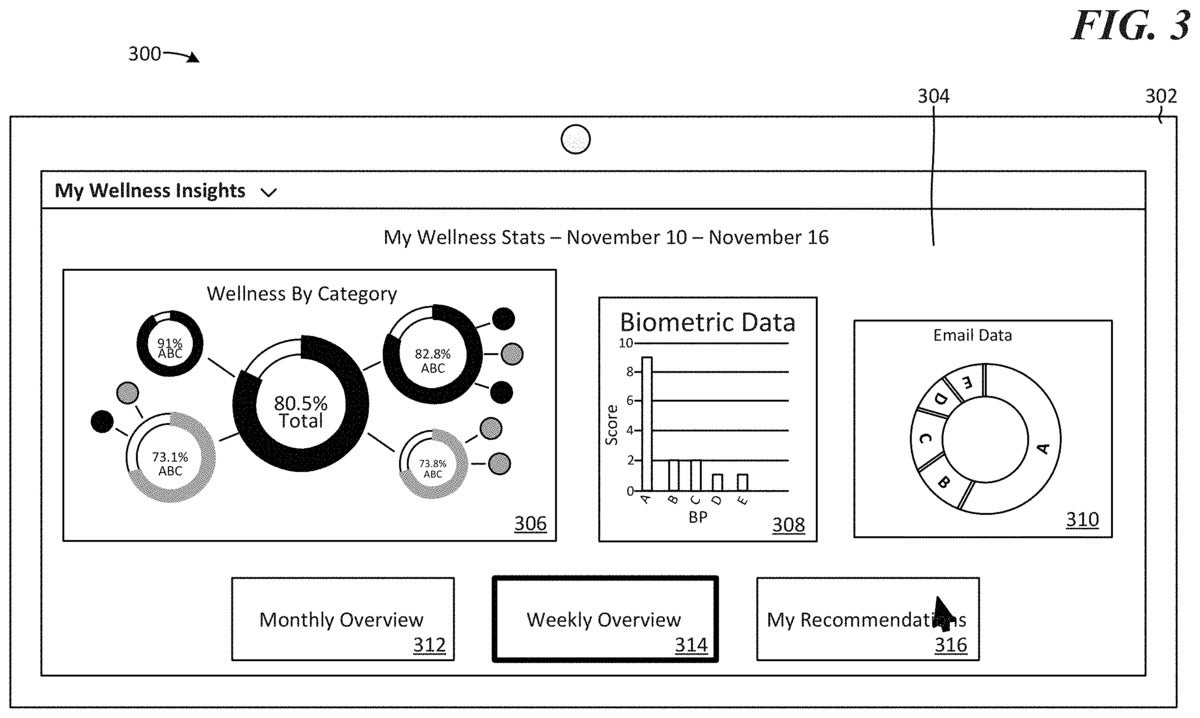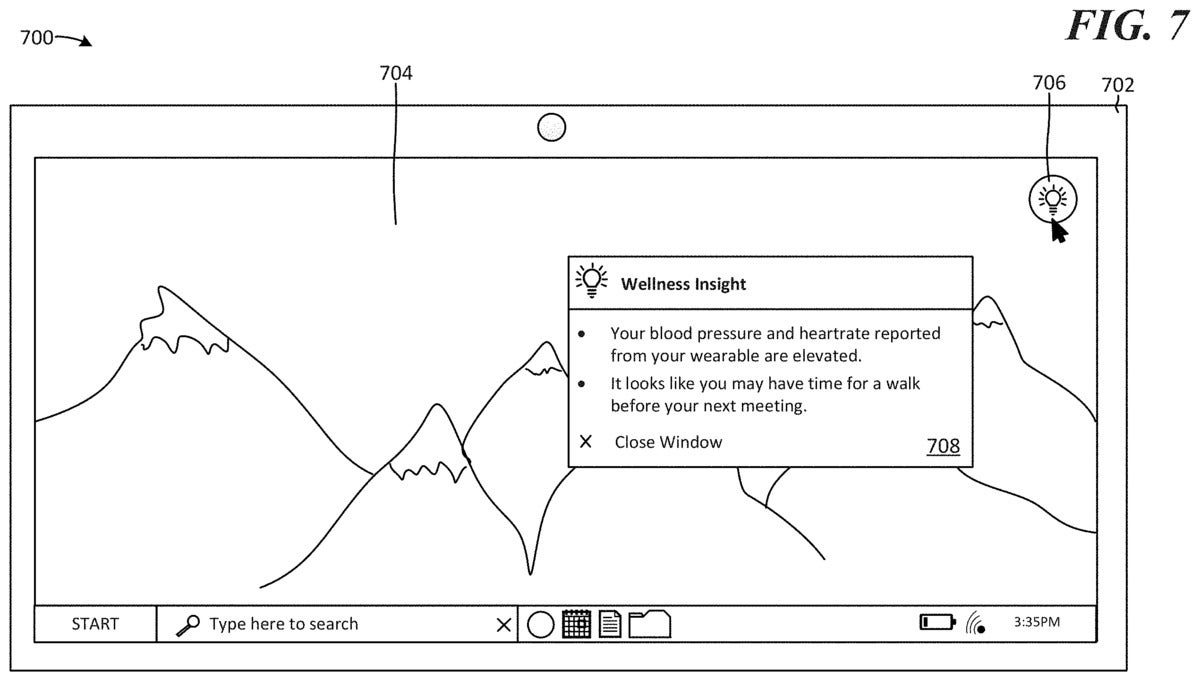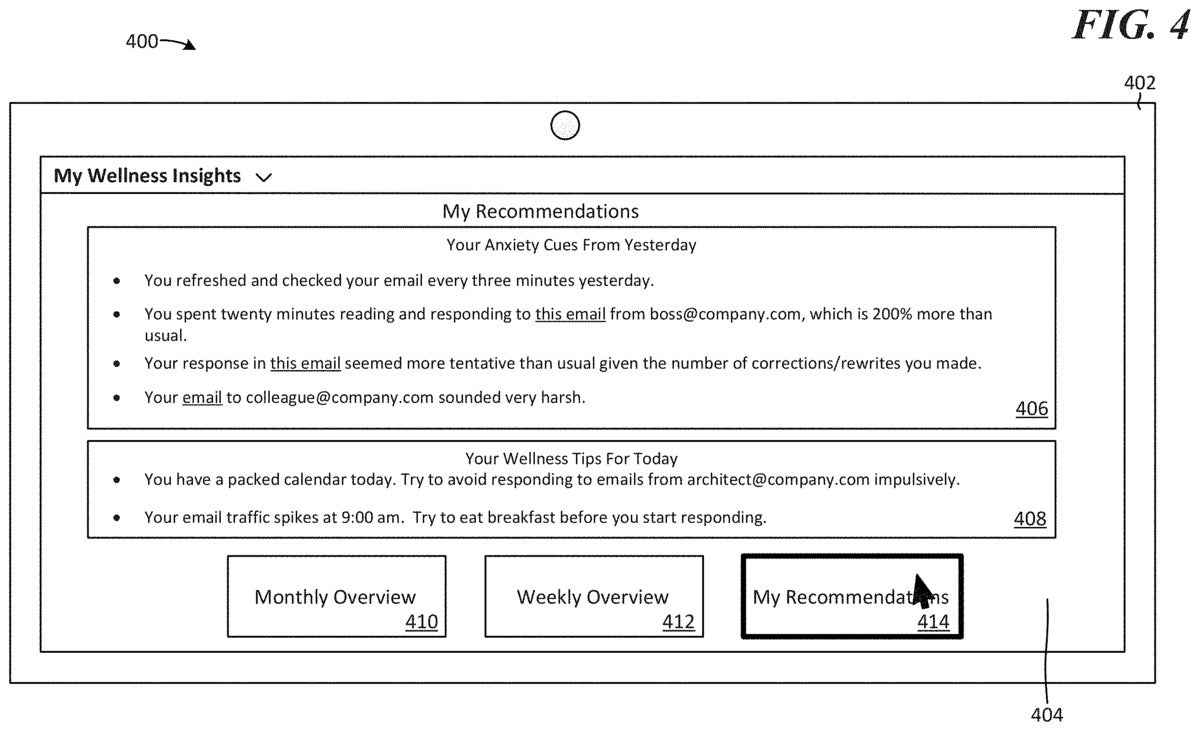The just-published patent describes a feature that generates an employee “anxiety score” based on data such as blood pressure and heart rate, suggesting when workers need to take a break.
Microsoft has patented an employee “wellbeing” recommendation feature that uses biometric data to detect a worker’s stress levels when completing tasks such as sending emails, encouraging them to take a break when anxiety levels run high.
The “Emotion Detection From Contextual Signals For Surfacing Wellness Insights” patent, filed in October 2019 and published last week, describes a “wellness insights service” that collates data from a range of sources. This includes blood pressure and heartrate monitoring data that could be obtained from an employees’ wearable devices, such as smart watches and fitness trackers.
The biometric data sources are combined with data generated within Microsoft’s Office apps to create an employee “anxiety score.” The range of possible inputs highlighted in the patent include audio and video meeting data, haptic sensor feedback showing how hard keys are pressed on a keyboard, or simply the amount of time it takes to draft an email.
 US Patent Office
US Patent OfficeOnce the anxiety score threshold is met, an algorithm would then alert the employee and suggest an action. Those alerts might include telling a worker they’re making more corrections than usual when drafting an email, or that their voice sounded agitated during a call; the feature would then recommend taking a break or perhaps a short walk to calm down.
The patent application was initially highlighted by the patentdrop substack and comes as employee wellbeing has become a growing focus for Microsoft and other companies — particularly during the pandemic, where the use of cloud apps boomed even as many workers reported burnout.
 US Patent Office
US Patent OfficeIt was not immediately clear whether Microsoft plans to release products based on the patent application. Companies routinely seek patents for technology or other intellectual property that don’t necessarily translate into real-world offerings.
 US Patent Office
US Patent OfficeMicrosoft recently took steps to combat worker stress with the introduction of a new capability in Outlook calendars that allows business customers to set all meetings to finish early or start late to prevent back-to-back meetings piling up. That’s come to be seen as a common cause of stress for remote workers and has prompted companies to seek innovative ways to engage employees and re-create an informal office atmosphere.
Microsoft has introduced a several workplace analytics tools to its productivity and collaboration application suite in recent years. This includes MyAnalytics, which surfaces data to individual workers about their working habits and provides a range of wellbeing recommendations, encouraging them to reduce the number of meetings, for instance, or highlighting a potential lack of “focus” time.
The company also recently uneviled Viva, part of a new Teams-based employee-experience platform; it incorporates MyAnalytics and Workplace Analytics – another analytics tool Microsoft 365 that offers higher-level insights aimed at managers and business leaders.
Other software vendors are incorporating workplace analytics into their products; Cisco and Google are among the companies moving to offer wellbeing analytics to individual employees based on their application use.
The introduction of analytics into such tools has raised concerns about the potential for workplace surveillance, and vendors have been keen to highlight the employee wellbeing benefits, as well as ensuring that personal analytics are only available to the individual worker.
Biometric data is less common for tracking worker wellbeing and use of the technology in a workplace setting has at times proved controversial; Amazon has reportedly required delivery drivers to sign “biometric consent” forms and agree to storage of facial recognition biometric data.
When Cisco unveiled its plans to offer “People Insights” earlier this month, company officials stressed that personal analytics are anonymized and not accessible by managers. “They’re not meant for your organization, they’re not meant for your boss, they’re not meant for your peers, it’s only for you,” said Jeetu Patel, senior vice president and general manager for Security and Collaboration at Cisco.
“The goal is not to inspect [what workers are doing], the goal is to help you manage your well-being, your productivity and nurture your relationships.”
While workplace analytics for both individuals and managers are becoming more widely available, the use of biometric data to monitor employee wellbeing is less common, though the technology is used for authentication purposes in some cases. Its use in some cases can raise concerns about employee privacy, and Raul Castanon, a senior research analyst at S&P Global Market Intelligence’s 451 Research advises caution when deploying the technologies.
“Consumers are increasingly familiar and comfortable with the use of wearable devices for collecting biometric data to monitor their health and wellbeing; however, extending these capabilities into the workplace will likely be a cause for concern for employees,” said Castanon.
“There are many benefits that analytics can provide to employees, including monitoring their health and wellbeing at work and in their personal life, but navigating this area can be extremely delicate for the enterprise.”
This article originally appeared on ComputerWorld.
